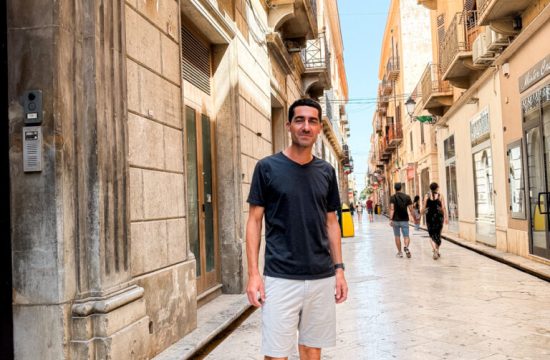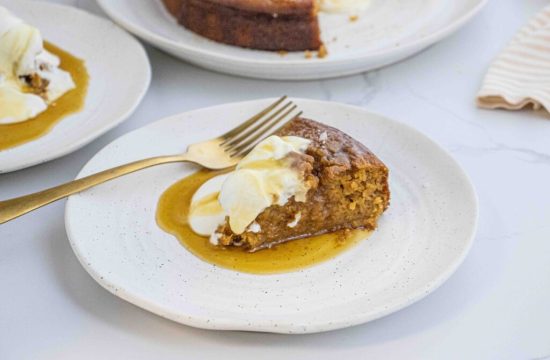11th chapter of Uttara Sthanam of Ashtanga Hridayam is named as Sandhi Sitasita Roga Pratishedha Adhyaya. This chapter deals with the explanation of ‘Treatment of diseases of the fornixes, sclera and cornea’.
The topics covered in this chapter include –
- Upanaha Cikitsa
- Parvani Cikitsa
- Puyalasa Cikitsa
- Krimigranthi Cikitsa
- Sukti, Balasa Grathita and Pistaka Cikitsa
- Rakta Abhisyanda treatment in Sirotpata and other diseases
- Sirotpata, Siraharsa, Arjuna Cikitsa
- Arma Cikitsa
- Sastra Cikitsa – Surgical treatment
- Remedies for inadequate or excess cutting
- Collyrium for Shleshma Timira and other conditions
- Lekhana Anjanani
- Treatment for Sirajala
- Sukra Cikitsa
- Ksata Sukra Cikitsa
- Danta Varti
- Tamalapatradi Varti
- Ratnadi Anjanam
- Treatment of Shukra
- Treatment of Shuddha Shukra
- Mahanila Gutika
- Treatment of immobile and thick sukra
- Harsana in Sukra
- Ksaradyanjana for sukra
- Mudgadyanjana for sukra
- Dasanadi Varti for sukra
- Indications for lekhana in Sukra
- Treatment principle for Sirasukra
- Pundradi Varti
- Ajaka Cikitsa
- Narikelasthyadi Anjanam
- Viddha karma in Ajaka
Pledge by the author (s)
अथात: सन्धिसितासितरोगप्रतिषेधं व्याख्यास्याम: ।
इति ह स्माहुरात्रेयादयो महर्षय: ।
अथात: सन्धि सिता असित रोग प्रतिषेधं व्याख्यास्याम:-After having offered prayers to the God, henceforth we are going to explain the chapter pertaining to the explanation of ‘Treatment of diseases of the fornices, sclera and cornea’.
इति ह स्मा: आत्रेयादयो महर्षय:- Thus, say (pledge) Atreya and other sages.
Upanaha Chikitsa
उपनाहं भिषक् स्विन्नं भिन्नं व्रीहिमुखेन च ।
लेखयेन्मण्डलाग्रेण ततश्च प्रतिसारयेत् ॥१॥
पिप्पलीक्षौद्रसिन्धूत्थैर्बध्नीयात्पूर्ववत्ततः ।
पटोलपत्रामलकक्वाथेनाश्च्योतयेच्च तम् ॥२॥
The physician should give fomentation in the form of Upanaha (poultice). Then puncture it with Vrihimuka Shastra (trocar). Scrape it with Mandalagra (lancet) and then apply the paste of Pippali – Piper longum and rock salt mixed with honey, bind it as described earlier (vide, verses 3-9 of chapter 9). Later aschyotana (washing the eye) is performed with the decoction of leaves of paṭolapatra – Trichosanthes dioica and āmalaka – Emblica officinalis.
Parvani Chikitsa
पर्वणी बडिशेनात्ता बाह्यसन्धित्रिभागतः ।
वृद्धिपत्रेण वर्ध्यार्धे स्यादश्रुगतिरन्यथा ॥३॥
चिकित्सा चार्मवत्क्षौद्रसैन्धवप्रतिसारिता ।
Parvani should be lifted up with Badisa (forceps), then cut (excised) with Vriddhi Patra (lancet) at about three fourths from the external joint. The excision made at half the length. Otherwise, there will be a flow of tears. Further treatment is similar to Arma (verse- 20-22 further) and pratisarana (applying the paste) with honey and rock salt should be done.
Puyalasa Chikitsa
पूयालसे सिरां विध्येत्ततस्तमुपनाहयेत् ॥४॥
कुर्वीत चाक्षिपाकोक्तं सर्वं कर्म यथाविधि ।
सैन्धवार्द्रककासीसलोहताम्रैः सुचूर्णितैः ॥५॥
चूर्णाञ्जनं प्रयुञ्जीत सक्षौद्रैर्वा रसक्रियाम् ।
In Puyalasa, the vein should be cut (to let out blood). Then given fomentation and all the treatment prescribed for Akshipaka (Ch. 15/28-30) should be done as per procedure. Rock salt, ārdraka – Zingiber officinale, kāsīsa – ferrous sulphate, loha – iron and tāmraiḥ – copper filings all nicely powdered and mixed with honey should be applied as collyrium or Rasakriya (thick decoction) of those herbs may be used (for this purpose).
Krimigranthi Chikitsa
कृमिग्रन्थिं करीषेण स्विन्नं भित्त्वा विलिख्य च॥६॥
त्रिफलाक्षौद्रकासीससैन्धवैः प्रतिसारयेत् ।
Krmigranthi should be given fomentation with (warm) cow dung. Then punctured and scraped, followed by application of powder of triphala – Haritaki – Terminalia chebula, Vibhitaki – Terminalia bellerica, Amalaki – Emblica officinalis, ferrous sulphate and rock salt mixed with honey.
Shukti, Balasa Grathita and Pistaka Chikitsa
पित्ताभिष्यन्दवच्छुक्तिं बलासाह्वयपिष्टके ॥७॥ कफाभिष्यन्दवन्मुक्त्वा सिराव्यधमुपाचरेत् ।
बीजपूररसाक्तं च व्योषकट्फलमञ्जनम् ॥८॥
Shukti should be treated in the same manner as Pittabhisyanda (verse 2-5 of Chapter 16). Balasagrathita and Pistaka should also be treated similar to Kaphabhisyanda, excluding venesection (vide chapter 16). (Powder of) Vyosa – Black pepper – Piper nigrum, long pepper fruit – Piper longum and Ginger – Zingiber officinale and kaṭphalaṃ – Myrica nagi, macerated with the juice of bījapūra ca – Citrus medica should be applied to eye as collyrium.
Shukti, Balasa Grathita and Pistaka Chikitsa
जातीमुकुलसिन्धूत्थदेवदारुमहौषधैः ।
पिष्टैः प्रसन्नया वर्तिः शोफकण्डूघ्नमञ्जनम् ॥९॥
(Powder of) Buds of Jasminum grandiflorum, rock salt devadāru – Cedrus deodara and mahauṣadhaiḥ – Zingiber officinale, made into wick of (nice paste) with prasanna (scum of beer) and used as eye salve cures swelling and itching.
Rakta Abhishyanda treatment in Sirotpata and other diseases
रक्तस्यन्दवदुत्पातहर्षजालार्जुनक्रिया ।
The treatment of Sirotpata, harṣa – Siraharsa, jāla – Sirajala, arjuna – Arjuna is similar to that of Raktaja Abhisyanda (chapter 16).
Sirotpata, Siraharsa, Arjuna Chikitsa
सिरोत्पाते विशेषेण घृतमाक्षिकमञ्जनम् ॥१०॥
सिराहर्षे तु मधुना श्लक्ष्णघृष्टं रसाञ्जनम् ।
अर्जुने शर्करामस्तुक्षौद्रैराश्च्योतनं हितम् ॥११॥
स्फटिकः कुङ्कुमं शङ्खो मधुकं मधुना ऽञ्जनम् ।मधुना चाञ्जनं शङ्खः फेनो वा सितया सह॥१२॥
In Sirotpata, especially ghee and honey mixed together should be used as collyrium. In Siraharsa, Rasanjana made into a fine paste with honey should be used. In Arjuna, Ascyotana (eye drops) with Sugar, watery portion of curds and honey is beneficial sphaṭikaḥ – Cinnamomum camphora, kuṅkumaṃ – Crocus sativus, śaṅkho – Convolvulus pluricaulis madhukaṃ – Glycyrrhiza glabra should be applied as collyrium with honey. Sauviranjana shall be used with honey śaṅkhaḥ – Convolvulus pluricaulis or sea foam (bone of the cuttlefish) with sugar may be used as Collyrium.
Arma Chikitsa
अर्मोक्तं पञ्चधा तत्र तनु धूमाविलं च यत् ।
रक्तं दधिनिभं यच्च शुक्रवत्तस्य भेषजम् ॥१३॥
Among the five varieties of Arma described, that which is thin, turbid like smoke, red and which resembles curds, are to be treated in the same manner as of Shukra (described further on)
Shastra Chikitsa: Surgical treatment
उत्तानस्येतरत्स्विन्नं ससिन्धूत्थेन चाञ्जितम् ।
रसेन बीजपूरस्य निमील्याक्षि विमर्दयेत् ॥१४॥
इत्थं संरोषिताक्षस्य प्रचलेऽर्माधिमांसके ।
घृतस्य निश्चलं मूर्ध्नि वर्त्मनोश्च विशेषतः ॥१५॥
अपाङ्गमीक्षमाणस्य वृद्धेऽर्मणि कनीनकात् ।
वली स्याद्यत्र तत्रार्म बडिशेनावलम्बितम् ॥१६॥
नात्यायतं मुचुण्ड्या वा सूच्या सूत्रेण वा ततः ।
समन्तान् मण्डलाग्रेण मोचयेदथ मोक्षितम् ॥१७॥
कनीनकमुपानीय चतुर्भागावशेषितम् ।
छिन्द्यात्कनीनकं रक्षेद्वाहिनीश्चाश्रुवाहिनीः ॥१८॥
कनीनकव्यधादश्रु नाडी चाक्ष्णि प्रवर्तते ।
वृद्धेऽर्मणि तथाऽपाङ्गात्पश्यतोऽस्य कनीनकम् ॥ १९ ॥
The patient (of Arma) is made to lie with his face up, the other eye is then given fomentation. Rock salt macerated with the juice of bījapūrasya – Citrus medica is applied as an eye-salve. The lids are then closed and massaged briskly. Thus, exciting the muscle growth of the Arma, the eye is made to move (loosened) by holding the head motionless the upper part of the lid is held, especially, the patient is asked to look towards the Apanga (outer canthus). Then the fold of the Arma, which hangs loosely more towards the Kaninaka (inner canthus) wherever there are folds. Those regions of arma are held with the forceps and cut; not too long, and later should be cut using mucundi (forceps), suchi (needle) and sutra (thread) all around with Mandalagra (Lancet). The muscle should be released from below, and the cut end is pulled towards the inner canthus. Quarter of it (muscle) should be left to remain in its place, the inner canthus and tear ducts being protected (not injured during cutting). Injury to the inner canthus leads to profuse flow of tears through the tear ducts. In case the Arma, that is more developed towards the outer canthus, the patient should be asked to look towards the inner canthus and then the cutting done suitably.
Shastra Chikitsa: Surgical treatment
सम्यक्छिन्नं मधुव्योषसैन्धवप्रतिसारितम् ।
उष्णेन सर्पिषा सिक्तमभ्यक्तं मधुसर्पिषा ॥२०॥
बध्नीयात्सेचयेन्मुक्त्वा तृतीयादिदिनेषु च ।
करञ्जबीजसिद्धेन क्षीरेण क्वथितैस्तथा ॥२१॥
सक्षौद्रैर्द्विनिशालोध्रपटोलीयष्टिकिंशुकैः ।
कुरण्टमुकुलोपेतैर्मुञ्चेदेवाह्नि सप्तमे ॥२२॥
After the cutting has been done properly, the eye should be smeared with honey, Vyosa – Black pepper – Piper nigrum, long pepper fruit – Piper longum and Ginger – Zingiber officinale and rock salt. Next, warm ghee is put in, then the eye is anointed with honey and ghee mixed together and bandaged. On the third day, it is removed and eye is washed with milk boiled with
seeds of Pongamia pinnata (and bandaged). Next, on the fifth day it should be washed with the decoction of the two Nisa -Daruharidra – Berberis aristata, Haridra – Curcuma longa, lodhra – Symplocos racemosa, paṭolī – Trichosanthes dioica, yaṣṭi - Glycyrrhiza glabra, kiṃśukaiḥ – Butea monosperma, and buds of Barleria prionitis, mixed with honey. On the seventh day the bandage should be removed finally.
Remedies for inadequate or excess cutting
सम्यक्छिन्ने भवेत्स्वास्थ्यं हीनातिच्छेदजान् गदान् ।
सेकाञ्जनप्रभृतिभिर्जयेल्लेखनबृंहणैः ॥२३॥
Proper cutting leads to health (normalcy of the eye). The diseases arising from inadequate or excess cutting should be treated by proper Seka (pouring medicated liquids into the eye). use of collyrium etc., lekhana (act of scraping) and brimhana (nourishing the eye).
Collyrium for Shleshma Timira and other conditions
सितामनःशिलैलेयलवणोत्तमनागरम् ।
अर्धकर्षोन्मितं तार्क्ष्यं पलार्धं च मधुद्रुतम् ॥२४॥
अञ्जनं श्लेष्मतिमिरपिल्लशुक्रार्मशोषजित् ।
Anjana (eye salve) prepared with half karsha (6 grams) each of sugar, manaḥśila - realgar, eleya – Prunus cerasus, rock salt, nāgaram – and Zingiber officinale, half pala (24 grams) of rasanjana / emerald and mixed with honey cures timira (blindness) caused by Kapha, Pilla and Sukra (both are eye diseases) and residue of Arma.
Lekhana Anjanani
त्रिफलैकतमद्रव्यत्वचं पानीयकल्किताम् ॥२५॥
शरावपिहितां दग्ध्वा कपाले चूर्णयेत्ततः ।
पृथक्शेषौषधरसैः पृथगेव च भाविता ॥२६॥
सा मषी शोषिता पेष्या भूयो द्विलवणान्विता ।
त्रीण्येतान्यञ्जनान्याह लेखनानि परं निमिः ॥२७॥
The skin (outer portion) of any one of the fruits among Triphala – Haritaki – Terminalia chebula, Vibhitaki – Terminalia bellerica, Amalaki – Emblica officinalis is macerated in water put inside an earthen saucer (covered with another saucer, their edges sealed, both together are coated with mud, dried in sun) and then placed inside a heap of burning cow-dung cakes and cooked. Next, it is powdered nicely and soaked in the decoction of the other two herbs (of triphala – Haritaki – Terminalia chebula, Vibhitaki – Terminalia bellerica, Amalaki – Emblic officinalis) separately. This ash is then filtered, mixed with two lavana – Saindava – rock salt
Souvarchala – black salt, and macerated well. These three eye-salves are best Lekhana (scraping the ulcer), says Nimi.
Treatment for Sirajala
सिराजाले सिरा यास्तु कठिना लेखनौषधैः ।
न सिध्यन्त्यर्मवत्तासां पिटिकानां च साधनम्॥२८ ॥
In Sirajala, the veins which are hard and do not respond to herbs of scraping action, the treatment is same as of Arma (surgical treatment). So also, for the Siraja Pitaka.
Shukra Chikitsa
दोषानुरोधाच्छुक्रेषु स्निग्धरूक्षा वरा घृतम् ।
तिक्तमूर्ध्वमसृक्स्रावो रेकसेकादि चेष्यते ॥२९॥
In Sukra, depending on the predominance of the doshas, snigdha – the treatment should be either unctuous (with use of fats) or dry (without the use of fats). Either Vara Ghrta (triphala Ghrta) or Tikta Ghrta (internally), bloodletting, purgation to the head, pouring decoctions over the eyes etc. (nasal medication, applying collyrium) are beneficial.
Ksata Shukra Chikitsa
त्रिस्त्रिवृद्वारिणा पक्वं क्षतशुक्रे घृतं पिबेत् ।
सिरयाऽनु हरेद्रक्तं जलौकोभिश्च लोचनात् ॥३०॥
सिद्धेनोत्पलकाकोलीद्राक्षायष्टीविदारिभिः ।
ससितेनाजपयसा सेचनं सलिलेन वा ॥३१॥
रागाश्रुवेदनाशान्तौ परं लेखनमञ्जनम् ।
In Kshata Shukra, the patient must consume medicated ghee boiled three times in the decoction of trivṛt – Operculina turpethum. The blood should be taken out from the eyes either by cutting the veins or by applying leeches. Goat milk boiled with utpala – Nymphaea alba, kākolī – Fritillaria roylei, drākṣā – Vitis vinifera, yaṣṭī – Glycyrrhiza glabra and vidāribhiḥ – Pueraria tuberosa mixed with sugar or the decoction of these herbs should be poured into the eye. After the cure of redness, flow of tears, and pain the collyrium is best which has scraping property.
Kshata Shukra Chikitsa
वर्तयो जातिमुकुललाक्षागैरिकचन्दनैः ॥३२॥
प्रसादयन्ति पित्तास्रं घ्नन्ति च क्षतशुक्रकम् ।
Medicinal wick prepared with the buds of jāti – Jasminum grandiflorum, lākṣā – Laccifer lacca, gairika – red ochre and candanaiḥ – Santalum album, (and its paste applied as eye- salve) It mitigates (the increased) Pitta and blood and cures Kshatashukra.
Danta Varti
दन्तैर्दन्तिवराहोष्ट्रगवाश्वाजखरोद्भवैः ॥३३॥
सशङ्खमौक्तिकाम्भोधिफेनैर्मरिचपादिकैः ।
क्षतशुक्रमपि व्यापि दन्तवर्तिर्निवर्तयेत् ॥३४॥
Wick is prepared from (the ash of) teeth of the elephant, boar, camel, cow, horse, goat and ass, conch shell, pearls, and seafoam added with one fourth part of marica – Piper nigrum. (and if applied to the eye as collyrium) This Dantavarti cures even Kshatashukra (as well as Shuddhashukra) though wide.
Tamalapatradi Varti
तमालपत्रं गोदन्तशङ्खफेनोऽस्थि गार्दभम् ।
ताम्रं च वर्तिर्मूत्रेण सर्वशुक्रकनाशिनी ॥३५॥
Wick prepared from tamālapatraṃ - Cinnamomum tamala, godanta – (ash of) cow tooth, śaṅkha – conch, pheno – sea foam, asthi gārdabham – ash of bones of a donkey and copper filings macerated with cow’s urine (and used as collyrium) cures all the varieties of Shukra.
Ratnadi Anjanam
रत्नानि दन्ताः शृङ्गाणि धातवस्त्र्यूषणं त्रुटी ।
करञ्जबीजं लशुनो व्रणसादि च भेषजम् ॥३६॥
सव्रणाव्रणगम्भीरत्वक्स्थशुक्रघ्नमञ्जनम् ।
Gems (pearl, coral etc.) teeth (of animals like elephants etc.), horns, dhatu (mineral ores such as Gairika etc.).
Tryusana –
- Black pepper – Piper nigrum
- Long pepper fruit – Piper longum and
- Ginger – Zingiber officinale,
Truti – Elettaria cardamomum, seeds of Pongamia pinnata; laśuno – Allium sativum and medicines which cure ulcers, used as collyrium cure Shukra, having ulcers, not having ulcers, deep seated and localized in the skin.
Treatment of Shukra
निम्नमुन्नमयेत्स्नेहपाननस्यरसाञ्जनैः ॥३७॥
सरुजं नीरुजं तृप्तिपुटपाकेन शुक्रकम् ।
Shukra which is depressing and painful should be lifted up by therapies such as drinking of fat, nasal medication and use of rasanjana, that which is painless by therapies, such as tarpana and putapaka (chapter 24 of Sutrasthana).
Treatment of Shuddha Shukra
शुद्धशुक्रे निशायष्टीशारिवाशाबराम्भसा ॥३८॥
सेचनं लोध्रपोटल्या कोष्णाम्भोमग्नयाऽथवा ।
Shuddhashukra should be treated by pouring the decoction of niśā – Curcuma longa, yaṣṭī – Glycyrrhiza glabra, śārivā – Hemidesmus indicus and śābara – Symplocos racemosa over the eye, or by mild fomentation with bolus of paste of Symplocos racemosa, warm water or by exposure to fire.
Mahanila Gutika
बृहतीमूलयष्ट्याह्वताम्रसैन्धवनागरैः ॥३९॥ धात्रीफलाम्बुना पिष्टैर्लेपितं ताम्रभाजनम् । यवाज्यामलकीपत्रैर्बहुशो धूपयेत्ततः ॥४०॥
तत्र कुर्वीत गुटिकास्ता जलक्षौद्रपेषिताः ।
महानीला इति ख्याताः शुद्धशुक्रहराः परम् ॥४१॥
Roots of Solanum indicum, yaṣṭyāhva - Glycyrrhiza glabra, tāmra – copper, rock salt and nāgaraiḥ – Zingiber officinale are macerated in the juice of dhātrīphala – Emblica officinalis and applied over a copper vessel (after drying) for many times. It should be exposed to the smoke of yava – Hordeum vulgare, ghee and leaves of Emblica officinalis. Then the paste is macerated with water and honey and rolled into pills. This is known as Mahanila Gutika (used as eye salve) which is best to cure Shuddhashukra.
Treatment of immobile and thick Shukra
स्थिरे शुक्रे घने चास्य बहुशोऽपहरेदसृक् । शिरःकायविरेकांश्च पुटपाकांश्च भूरिशः ॥ ४२ ॥
In case of shukra, being immobile and thick, the blood of the patient should be removed often, purgation to the head and the body and putapaka (eye drops) should be administered in large measure (many times).
Harshana in Shukra
कुर्यान्मरिचवैदेहीशिरीषफलसैन्धवैः ।
हर्षणं त्रिफलाक्वाथपीतेन लवणेन वा ॥४३॥
In sukra, harshana (raising the veins) should be done by applying (the powder of) marica – Piper nigrum, vaidehī – Piper longum, fruit of Albizia lebbeck and rock salt or by lavana (salt/rock salt) alone; after the patient has consumed the decoction of triphala-
- Haritaki – Terminalia chebula
- Vibhitaki – Terminalia bellerica
- Amalaki – Emblica officinalis.
Shankadi Anjana
कुर्यादञ्जनयोगौ वा श्लोकार्धगदिताविमौ ।
शङ्खकोलास्थिकतकद्राक्षामधुकमाक्षिकैः ॥४४॥
सुरादन्तार्णवमलैः शिरीषकुसुमान्वितैः ।
Prepare eye-salve with herbs mentioned in the following half verses by making use of; śaṅkha – conch, kolāsthi – seed of Piper cubeba, kataka – Strychnos potatorum, drākṣā – Vitis vinifera, madhuka – Glycyrrhiza glabra and mākṣikaiḥ – pyrite; alcoholic preparation, danta – cow’s tooth, ārṇava malaiḥ – seafoam added with flower of Albizia lebbeck.
Ksharadyanjana for shukra
धात्रीफणिज्जकरसे क्षारो लाङ्गलिकोद्भवः ॥४५॥
उषितः शोषितश्चूर्णः शुक्रहर्षणमञ्जनम् ।
Alkali obtained from lāṅgalikā – Gloriosa superba, soaked in the juice of Emblica officinalis and phaṇijjaka – Origanum majorana; burnt, dried and powdered añjanam – is a collyrium best to rise the Shukra.
Mudgadyanjana for Shukra
मुद्गा वा निस्तुषाः पिष्टाः शङ्खक्षौद्रसमायुताः ॥ ४६ ॥
सारो मधूकान् मधुमान् मज्जा वाऽक्षात्समाक्षिका ।
mudgā vā – Or Vigna radiata, nistuṣāḥ – devoid of its husk, mixed with śaṅkha – conch and honey and macerated or extract of Madhuca longifolia mixed with honey or the marrow of Aksha (Teminalia bellerica) mixed with honey (acts Similarly).
Dashanadi Varti for shukra
गोखराश्वोष्ट्रदशनाः शङ्खः फेनः समुद्रजः ॥४७॥
वर्तिरर्जुनतोयेन हृष्टशुक्रकनाशिनी ।
Wick prepared with the (ash of) teeth of the cow, ass, horse, and camel, śaṅkhaḥ – conch and cuttlefish bone macerated with the decoction of arjuna – Terminalia arjuna, cures Shukra which has been raised.
Indications for lekhana in Shukra
उत्सन्नं वा सशल्यं वा शूक्रं वालादिभिर्लिखेत्॥४८॥
Sukra which are elevated or having a foreign body should be scraped with hair (which are rough) etc. (leaves, Barks or other rough materials).
Treatment principle for Sirashukra
सिराशुक्रे त्वदृष्टिघ्ने चिकित्सा व्रणशुक्रवत् ।
In Sirashukra, which has not caused loss of vision, the treatment is the same as vranashukra.
Pundradi Varti
पुण्ड्रयष्ट्याह्वकाकोलीसिंहीलोहनिशाञ्जनम् ॥४९॥
कल्कितं छागदुग्धेन सघृतैर्धूपितं यवैः ।
धात्रीपत्रैश्च पर्यायाद्वर्तिरत्राञ्जनं परम् ॥५०॥
puṇḍra – Nelumbo nucifera, yaṣṭyāhva – Glycyrrhiza glabra, kākolī – Fritillaria roylei, siṃhī - Solanum indicum, loha – Aquilaria agallocha, niśa – Curcuma longa and Lead sulphide made into a paste with goat’s milk is exposed to the fumes of Yava – Hordeum vulgare and leaves of Emblica officinalis mixed with ghee alternately and is made into wicks, applied as eye-salve is the best in this disease
Ajaka Chikitsa
अशान्तावर्मवच्छस्त्रमजकाख्ये च योजयेत् ।
अजकायामसाध्यायां शुक्रेऽन्यत्र च तद्विधे ॥५१॥
वेदनोपशमं स्नेहपानासृक्स्रावणादिभिः ।
कुर्याद्बीभत्सतां जेतुं शुक्रस्योत्सेधसाधनम् ॥५२॥
If the disease does not subside, surgical treatment as prescribed for Arma should be done in Ajaka. In incurable Ajaka, Shukra and other similar diseases, pain should be relieved by drinking of fat, bloodletting etc. And other drastic measures should be done to relieve the great swelling of Shukra.
Narikela asthyadi anjanam
नारिकेलास्थिभल्लाततालवंशकरीरजम् ।
भस्माद्भिः स्रावयेत्ताभिर्भावयेत्करभास्थिजम्॥५३॥
चूर्णं शुक्रेष्वसाध्येषु तद्वैवर्ण्यघ्नमञ्जनम् ।
साध्येषु साधनायालमिदमेव च शीलितम् ॥५४॥
The ash of shell of Cocus nucifera; bhallāta – Semecarpus anacardium, tāla – Borassus flabellifer, vaṃśa – Bambusa arundinacea , karīrajam – Capparis decidua mixed with the ash of bones of camel, should be rinsed in water many times as indicated in the preparation of alkalies (chapter 30 of Sutrasthana) and then dried powdered and used as a collyrium in the incurable Sukra It removes the discoloration and in the curable kind, this alone is enough to cure the disease, if used habitually.
Viddha karma in Ajaka
अजकां पार्श्वतो विद्ध्वा सूच्या विस्राव्य चोदकम् ।
समं प्रपीड्याङ्गुष्ठेन वसार्द्रेणानु पूरयेत् ॥५५॥
व्रणं गोमांसचूर्णेन बद्धं बद्धं विमुच्य च ।
सप्तरात्राद्व्रणे रूढे कृष्णभागे समे स्थिरे ॥५६॥
स्नेहाञ्जनं च कर्तव्यं नस्यं च क्षीरसर्पिषा ।
तथाऽपि पुनराध्माने भेदच्छेदादिकां क्रियाम्॥५७॥
युक्त्या कुर्याद्यथा नातिच्छेदेन स्यात्निमज्जनम् ॥ ५७ऊअब् ॥
Ajaka should be pricked from the sides, by the needle, the watery fluid inside is squeezed out by kneading evenly with the thumb and moist cloth, then the ulcer should be filled with the powder of cow meat and bandaged. This process of filling, bandaging and removal, for seven days, when the ulcer heals and the black portion (cornea) becomes even and immovable, then eye-salve mixed with fats should be done and nasal drops with milk and ghee. Even after these therapies, if it gets swollen, filled with fluid, then pricking or excision should be undertaken, as much as justified, since excess of treatment (pricking and excision) leads to sinking (blindness).
Viddha karma in Ajaka
नित्यं च शुक्रेषु शृतं यथास्वं पाने च मर्शे च घृतं विदध्यात् ।
न हीयते लब्धबला तथाऽन्तस्तीक्ष्णाञ्जनैर्दृक् सततं प्रयुक्तैः ॥५८॥
In Shukra, medicated ghee prepared with appropriate herbs should be used daily for internal consumption and nasal drops. By this method, one gains strength and does not suffer from the effects of strong collyrium, even with continuous (habitual) use
इति श्री वैद्यपति सिंहगुप्तसूनु श्रीमद्वाग्भटविरचितायामष्टाङ्गहृदयसंहितायां षष्ठे उत्तरस्थाने सन्धिसितासितरोगप्रतिषेधो नामैकादशोऽध्याय: ॥ ११ ॥
Thus, ends the chapter-Sandhisitasita Roga Pratisedha- the eleventh in Uttar sthana of Astang Hrdaya Samhita, composed by Srimad Vagbhata, son of sri VaidyapatiSimhagupta.













